Clifford Garstang's Blog, page 71
September 17, 2013
2013 Reading: Secure the Shadow by Claudia Emerson
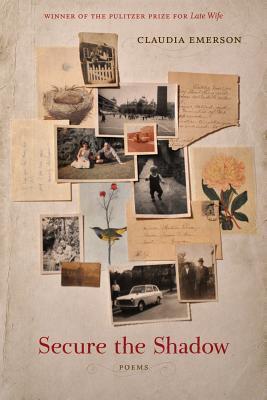 Secure the Shadow: Poems by Claudia Emerson.
Secure the Shadow: Poems by Claudia Emerson.
I would have read this collection even if it weren’t a finalist for the Library of Virginia Award in Poetry because Emerson, who has been on faculty at the Sewanee Writers’ Conference several times (maybe every time?) when I’ve been there, is a wonderful poet. I truly enjoyed one of her previous books, Late Wife, which won the Pulitzer Prize.
This is a melancholy collection, dealing as it does with death and memories, but as Kelly Cherry says in her endorsement, the poems are “graceful, sturdy, fiercely controlled, [and] profoundly imaged.”
The title of the book comes from an advertising slogan for postmortem images of the deceased: “Secure the shadow ‘ere the substance fade.” The title poem describes several such images. Other poems grapple with the the deaths of a sibling, a parent, pets, farm animals–it’s everywhere and unavoidable.
September 16, 2013
2013 Reading: Come August, Come Freedom by Gigi Amateau
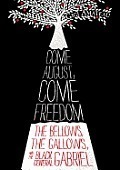 Come August, Come Freedom: The Bellows, The Gallows, and The Black General Gabriel by Gigi Amateau
Come August, Come Freedom: The Bellows, The Gallows, and The Black General Gabriel by Gigi Amateau
In this book for younger readers (12 and up), Gigi Amateau tells the beautiful story of a failed slave rebellion in 1800. The story is largely imagined, and yet it is clearly based on meticulous research, and it sheds light on a historical event with which I was not familiar.
I am not in the habit of reading books aimed at younger readers. This one I read, though, because I know Gigi and because the book is a finalist for the Library of Virginia’s People’s Choice Award.
Told mostly from the point of view of Gabriel, the leader of the failed rebellion, the story depicts his childhood on a Virginia plantation. It is often the story of betrayal–at the hands of his white playmate who becomes his “master” and his compatriots in the rebellion. But it’s also a love story. For me, primarily, it was a history lesson.
I would definitely recommend this book for young readers.
The New Yorker: “Bad Dreams” by Tessa Hadley
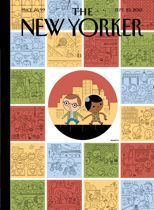 September 23, 2013: “Bad Dreams” by Tessa Hadley
September 23, 2013: “Bad Dreams” by Tessa Hadley
Ugh. Not another Tessa Hadley story, I complained (even though I usually like her stories). And, by rights, I should have hated this one. (It’s available free on line, by the way; click the title above.) The narrator—the first narrator, anyway—is a child, and I don’t usually like fiction with child narrators. It begins with the girl lying in bed thinking as she awakens—one of the tiredest clichés in the book. The story centers on the girl’s dream (the mother has a dream, too) and I generally despise dreams in fiction because they undermine, for me, the fictional dream of the “real” narrative. And to top it all off, the contributor’s notes for Hadley reveal that she has a new novel coming out called Clever Girl, and I guessed that this story might be an excerpt from that novel—another reason to hate it.
But, despite all that, I liked it a lot. Refuting my own complaints in reverse order: the Q&A with Tessa Hadley doesn’t say anything about this being an excerpt from the novel, and in fact the novel is already out, so perhaps it isn’t an excerpt after all. While it’s true that I don’t generally like dreams in fiction, this one influences the girl to act, and it is her action that is important. Plus, as the title suggests, the story is about dreams, and probably in more ways than one. I still don’t like child narrators, but this child is interesting and the narration does shift to an adult midway through. And the story is about dreams, so it makes sense that it begins with the girl in bed, recalling her dream. That’s how dreams work, so cliché be damned.
The story is about a girl who wakes up from a dream in which she has discovered an epilog to her favorite book in which it is revealed how all of her favorite characters from the book will die in the future. She finds this so disturbing that she gets out of bed and after a little nocturnal wandering in the family’s small apartment, upturns the chairs in the living room. Her mother gets up at dawn and discovers the upturned chairs and draws the wrong conclusion about who did it, which leads her to reflect on her present circumstances.
I loved that. I also loved several other features of the story, including the fact that the characters are unnamed and the city is unidentified. Also, much is revealed about the apartment and its inhabitants organically—the girl roves through the apartment and sees or feels its features, none of which the author has to describe because we are seeing them along with the girl. Also, while the conflict in the story isn’t initially clear, the story is quite suspenseful for a variety of reasons—the space is confined, the family is financially constrained, the story happens mostly in the dark.
Take a look and let me know what you think. It might be my favorite for Story of the Year.
September 13, 2013
2013 Reading: Bones of an Inland Sea by Mary Akers
 Bones of an Inland Sea by Mary Akers
Bones of an Inland Sea by Mary Akers
This is a wonderful collection of stories (linked thematically and with some character connections) by a good friend. In fact, most if not all of these stories I had seen in early drafts because Mary and I frequently exchange stories for critique. And I’m also please to say that I published one of the stories in Prime Number Magazine (“Treasures Few Have Ever Seen” in Issue 29, October 2012). And I was pleased to include an interview with Mary on this blog recently.
Individually, the stories are terrific, and they also make for an impressive book as they deal with environmental issues, especially, but also dramatic interpersonal relationships that color all of human existence. In one story, the protagonist is dealing with the both the ecological and human catastrophe that is the Boxing Day Tsunami in Southeast Asia. In another story the protagonist deals with the aftermath of choices she made long ago as a graduate student studying the “bones of an inland sea” when she had an affair with her professor. In yet another story, a character uses her knowledge of jelly fish to her advantage.
Andrea Barrett says of the book: “In Mary Akers’s stories, as complexly intertwined as the branches of a coral reef, her passionate characters engage both each other and a richly detailed vital physical world. An impressive achievment.” I wouldn’t normally quote a blurb from the book’s cover, but that pretty much sums up what this book is. So there you have it.
Also, check out Mary’s cool new website.
2013 Reading: The First Man by Albert Camus
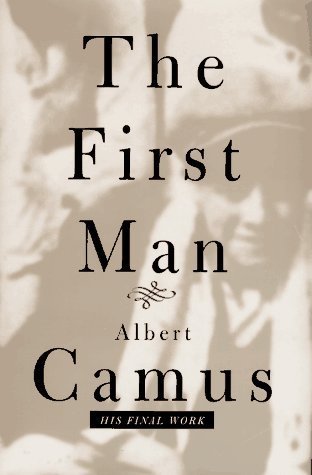 The First Man by Albert Camus
The First Man by Albert Camus
Unquestionably, Camus was one of the most influential writers and thinkers of the 20th Century. The Stranger is one of the most important books of the last 100 years, perhaps ever. So I was a bit intimidated to pick up The First Man, Camus’s posthumous autobiographical novel. (Apparently, the handwritten manuscript was in his possession when he died.)
There are two important aspects to the book. One is its very nature as an unfinished work. It includes mistakes and notes to himself, scribblings and unintelligible words. And yet, for all that, the prose is often quite beautiful. It’s clear that the finished product, if Camus had lived to complete the book (and revise and edit it) would have been amazing. The other important feature are the themes of the book and clear indications of the source of the writer’s alienation. We see his childhood in Algiers and his difficult life, but it’s also clear that he emerged from that background with distinct views.
It’s an important read for anyone who is interested in Camus.
September 9, 2013
The New Yorker: “By Fire” by Tahar Ben Jelloun
 September 16, 2013: “By Fire” by Tahar Ben Jelloun
September 16, 2013: “By Fire” by Tahar Ben Jelloun
This isn’t a short story so much as a barely fictionalized account of actual events in Tunisia, and as such it is more a political tract than a work of literature.
Here’s the story: Mohamed can’t find work. The police and governing authorities are universally corrupt and make his life impossible. In frustration, Mohamed self-immolates, prompting an outpouring of resentment and the downfall of government.
I’m sympathetic with the Mohameds of the Arab world, but this isn’t worthy of the fiction section of The New Yorker.
September 8, 2013
Writing in Coffee Shops
 Lately, I’ve been doing a lot of work in coffee shops. I’m not sure why, but I find it stimulating (and not just because of the coffee). I have a nice big house with an office that is bright and airy (although cluttered, and that, honestly, may be part of the problem), but I’ve been able to focus more when I leave the house and set up my laptop in a public place. I can’t explain it. It’s not as if these are quiet spots–most of the coffee shops in the area play music, and usually it’s the music favored by the younger baristi. Plus, when the shops are busy they are a cacophony of conversations. When that happens, I generally tune into my Pandora account and listen to something soothing that blocks it all out.
Lately, I’ve been doing a lot of work in coffee shops. I’m not sure why, but I find it stimulating (and not just because of the coffee). I have a nice big house with an office that is bright and airy (although cluttered, and that, honestly, may be part of the problem), but I’ve been able to focus more when I leave the house and set up my laptop in a public place. I can’t explain it. It’s not as if these are quiet spots–most of the coffee shops in the area play music, and usually it’s the music favored by the younger baristi. Plus, when the shops are busy they are a cacophony of conversations. When that happens, I generally tune into my Pandora account and listen to something soothing that blocks it all out.
In fact, I’m one of my favorites right now, Blue Mountain Coffees in the Wharf area of Staunton. I’m under some pressure to finish up some things and I thought it would be a good idea to get out of the house on a Sunday morning and concentrate. It’s working out well so far (except for the break I took to write this post!).
Back to work!
September 6, 2013
2013 Reading: Snow Hunters by Paul Yoon
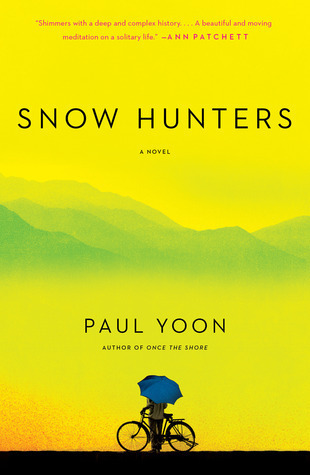 Snow Hunters: A Novel by Paul Yoon
Snow Hunters: A Novel by Paul Yoon
It’s not that I didn’t like this book. I did. It’s a short, quiet narrative that I was quite interested to follow. But I am puzzled by it, too. It is extremely quiet. Very little happens, at least not in the present, which is what forms the bulk of the story. And the language is surprisingly static, perhaps on purpose. (Start counting the instances of the verb “to be” and you’ll quickly lose track, there are so many.) There are also some odd shifts of point of view that I thought were unnecessary, and there’s not a whole lot of dialogue, either. In general, it’s a story that feels “told” as opposed to being “shown,” and as a result, I just can’t say that I love it.
On the other hand, it’s an intriguing story. Yohan is a North Korean who is captured during the Korean war and imprisoned in the South. Eventually, a year after the war, he chooses not to be repatriated and so, instead, is sent to Brazil where he becomes an apprentice to a Japanese tailor. (The story begins in 1954, and Yohan describes the hill town in Brazil, mentioning the television antennas. I thought this was odd. TV did come to Brazil before this date—although it probably was only in major cities—but would Yohan, who grew up in North Korea and was a prisoner in the South, where TV didn’t arrive until later, even know what the antennas were? We also get lots of flashbacks as we learn about Yohan’s friend Peng, and also Yohan’s father) He interacts with the local people, eventually learns Portuguese, and becomes attached to a couple of homeless children. Time passes . . .
I think the review of this book in the New York Times hits on my discomfort here. Yohan doesn’t seem to want anything. He is disconnected and seems content to remain so. As Tatiana Soli writes, “While this reticence might seem logical in the context of Yohan’s postwar trauma, it is mirrored to some extent in all the characters. Inaction, like happiness, is a form of narrative stasis that is difficult to write about. No matter how strikingly rendered, a series of moments and images ultimately needs causation rather than mere accumulation to move the story forward.” Soli lets him off easily, here, because I think this is a significant concern. Then again, in a novel this short, maybe readers aren’t expected to notice. Writers probably do.
I enjoyed the book, in the end, but it left me wanting more. Maybe that’s a good thing.
(I know Paul and have greatly admired his short stories in the past. I’m looking forward to seeing more of his work in the future!)

Tips for Writers: LitMag Submission Season
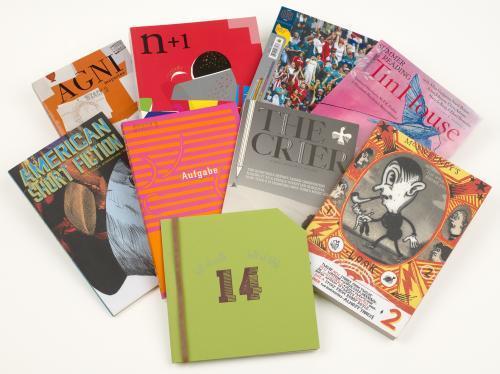 It’s September, and that means a lot of my writer friends are gearing up their submissions to literary magazines, many of which close to submissions over the summer. Many of us have our favorites, but for writers who are just beginning to submit their work for publication, figuring out WHERE to submit can be daunting.
It’s September, and that means a lot of my writer friends are gearing up their submissions to literary magazines, many of which close to submissions over the summer. Many of us have our favorites, but for writers who are just beginning to submit their work for publication, figuring out WHERE to submit can be daunting.
It’s important to know where your work fits and which magazines publish that kind of work. You wouldn’t send a short story to a magazine that publishes only poetry, and you probably shouldn’t send a realistic story to a magazine that publishes only speculative fiction. Know your own work, and know the market.
How to know the market? There are resources available, including Writers Market, Poets & Writers, NewPages, and Duotrope. One of my favorites has always been the listserv run by Allison Joseph: CRWROPPS.
And then there’s my Literary Magazine Ranking. This is a list I update every year based on the Pushchart Prizes. I originally created the list several years ago to help guide my own submissions. Many people find it helpful.
These resources are just starting points, however. The best way to know the market is to read widely. Subscribe to magazines, if you can, or seek them out in libraries. And good luck with your submissions!
September 5, 2013
Interview with Mary Akers, author of Bones of an Inland Sea
 My friend Mary Akers has a new book out, Bones of an Inland Sea (Press 53, 2013). I plan to give you my own reaction to this wonderful book in a day or two, but for now let me share with you this conversation I had with Mary. By the way, here’s what National Book Award-winner Andrea Barrett has to say about the book (just so you know I’m not lying):
My friend Mary Akers has a new book out, Bones of an Inland Sea (Press 53, 2013). I plan to give you my own reaction to this wonderful book in a day or two, but for now let me share with you this conversation I had with Mary. By the way, here’s what National Book Award-winner Andrea Barrett has to say about the book (just so you know I’m not lying):
“In Mary Akers’ stories, as complexly intertwined as the branches of a coral reef, her passionate characters engage both each other and a richly detailed, vital physical world. An impressive achievement.”
Here’s our conversation:
Clifford Garstang: Your book Bones of an Inland Sea is a collection of individual stories. But as readers move through the stories, it becomes clear that they are all linked together in fascinating ways. The more stories one reads, the more the characters reappear and relationships evolve. In the end, it feels a bit like reading a novel. Could you talk about that?
Mary Akers: If I had to assign this book a descriptive term other than short story collection, I would call it a “composite novel” or a “polyphonic novel”—a novel told in many voices. All the stories are interrelated, and yet each story stands alone. Characters repeat throughout the stories and several characters get more than one chance to tell their stories. I liked exploring how our stories change over time. What we tell ourselves, and others, about our lives changes as we grow and evolve, and even how we tell the story changes. Do we focus on reliving the bad? Or do we gain acceptance over time and tell a very different story twenty years after the actual events occurred? The stories in this collection explore the many ways that stories are told: the long view, the personal letter, a retrospective, a play-by-play, from multiple perspectives, etc.
CG: I recognized some familiar scenarios in these stories. There’s a devastating tsunami in Thailand, a woman in a persistent vegetative state with a family fighting over her right to live or die, a cult reminiscent of Jim Jones’ cult in Jonestown Guyana. Do you take inspiration from the news?
MA: Sure, I mean I take inspiration from just about anything, but especially from things that haunt me, things that I don’t understand and can’t let go. The Terri Schiavo case is a good example of that. And the awful images from the Boxing Day tsunami were so painful, especially for someone like me who has loved the ocean all her life. I was about twelve when the huge mass suicide in Jonestown Guyana occurred. I will never forget the news footage of all those piles of bodies laid out on the ground, arms around one another. How does one man convince 800 people to kill their children and then take their own lives?
CG: So would you say you are an issue-driven writer? Are you trying to get your readers to think a certain way about the world?
MA: It’s my job (as I see it) not to make my readers think a certain way, but to make them think. I don’t have an agenda when I write. Or if I do, it’s only to understand, to be open, and try to figure out what is right and what is moral and what it means to be human in this complicated modern world of ours. If that comes across to readers and in turn gives them some good food for their own thoughts, then I’m very happy with that outcome.
I conducted an interview recently with Robert Boswell, a really wonderful writer, and he said he’s been formulating this idea of low-custody authors versus high-custody authors. You know how some authors take you by the hand and walk you through a sort of guided tour, telling you all along the way what this or that means and what you should feel? Well, that’s a high-custody author, like Tolstoy, for instance, but that’s not me. I would call myself a low-custody author, more like Chekhov. I want my reader to do a little work, too, and I think most readers like to do that work. It makes us feel smart when we recognize what is happening or when we are left to figure something out on our own. Basically, I present the scenarios and the characters without any authorial judgment (or I try to), and I want to give the reader the opportunity to decide what he or she thinks.
After all, when I make a book, it’s only half done. A book is just symbols on a page. It takes a reader to finish the book. Readers spend eight hours or more with my words, but they make the pictures in their minds, they bring their own experience to the reading, and they make the book theirs in a really unique way. All of the arts involve an intimate experience between maker and consumer, but there’s something especially intimate about reading. I think some of that has to do with the fact that most art involves the senses—sight, sound, smell, taste, touch. But writing actually involves THE MEMORY of the senses and the writer merely invokes them. The reader supplies them. For instance if a character thinks, “it smells like my grandmother’s kitchen,” well that means something very different to every reader. And even if I supply details—“it smelled like basil and ricotta and Aqua Net and love…” I’m still asking you to go back and do that work of memory and make it your own internal sensation from my list. Fascinating, isn’t it?
CG: There seem to be a lot of characters in this collection with military backgrounds. And also a lot of references to military actions and wars: You have a Viet Nam vet with PTSD, a Navy man who witnessed the bombings on Bikini Atoll in the 1950s, even a small local war in the Florida Keys over sponging rights in the early 1900s. Do you have a military background yourself?
MA: I was a military spouse for many years. My kids were all born in military hospitals. My father served during the Berlin Crisis. My uncle flew the hump in Burma. My grandfather landed on Iwo Jima. My brother was a navigator for Navy P-3 planes. My sister registered for the draft back in 1974 when she turned 18. All my life I have been surrounded by people—mostly men—who have served our country. The toll such service takes and also the benefits it provides to an individual are fascinating to me. I can’t think of any single experience that is more of a mixed bag of injuries and rewards.
CG: Another thing I noticed was that you have almost as many stories told from a male point of view as from a female point of view. Can you talk a little bit about why you chose to write from a male perspective?
MA: Well, men make up half the world, don’t they? I don’t know, it seemed like the stories needed to be told in the way they needed to be told. It was my job to rise to the occasion. If it’s difficult, that’s my struggle, but it’s one I embrace. To be a fiction writer is to spend a lot of time imagining the lives and thoughts of others—often people very different from oneself. I think it’s a challenge. And I find men (as a group) very interesting. I’m really interested in what they think and feel and how they do or don’t express that. I actually think it’s very hard to be a man these days.
CG: You have an event coming up—a book launch to celebrate the publication of Bones of an Inland Sea. It’s at The Roycroft, right? Could you tell us a little bit about that?
MA: I’d love to. It is a book launch party and it will be held on September 21st from 5-7pm at the brand new Roycroft Power House. It’s open to the public, but you do need a ticket to attend. I’ll have some interesting door prizes that relate to the themes in the book (fossils, seaglass jewelry) and hors d’oeuvres will be served along with a signature cocktail that was designed for the book. It’s called The Lifeboat, as in “May I offer you a Lifeboat?” or “Would you care for a Lifeboat?”
Basically, the launch party is a celebration designed to send this baby book out into the world. Copies will be available for sale—and I’ll be signing them, and I’ll also give a short reading to give attendees a feel for the book. It’s always fun to hear work read in the author’s voice.
CG: Check out Mary’s website and blog, and her author page at Press 53.
 Mary Akers is the author of the award-winning short story collection Women Up On Blocks (Press 53, 2009) and Bones of an Inland Sea (2013). She is Editor-in-chief of the online journal r.kv.r.y. and has been a VCCA Fellow and a Bread Loaf waiter. She co-founded the Institute for Tropical Marine Ecology, a study abroad marine ecology program originally located in Roseau, Dominica. Akers frequently writes fiction that focuses on the intersections between art and science, including such topics as diverse and timely as the environmental movement and the struggle for human and animal rights. Although raised in the Blue Ridge Mountains of Virginia, which she will always call home, she currently lives in western New York.
Mary Akers is the author of the award-winning short story collection Women Up On Blocks (Press 53, 2009) and Bones of an Inland Sea (2013). She is Editor-in-chief of the online journal r.kv.r.y. and has been a VCCA Fellow and a Bread Loaf waiter. She co-founded the Institute for Tropical Marine Ecology, a study abroad marine ecology program originally located in Roseau, Dominica. Akers frequently writes fiction that focuses on the intersections between art and science, including such topics as diverse and timely as the environmental movement and the struggle for human and animal rights. Although raised in the Blue Ridge Mountains of Virginia, which she will always call home, she currently lives in western New York.



